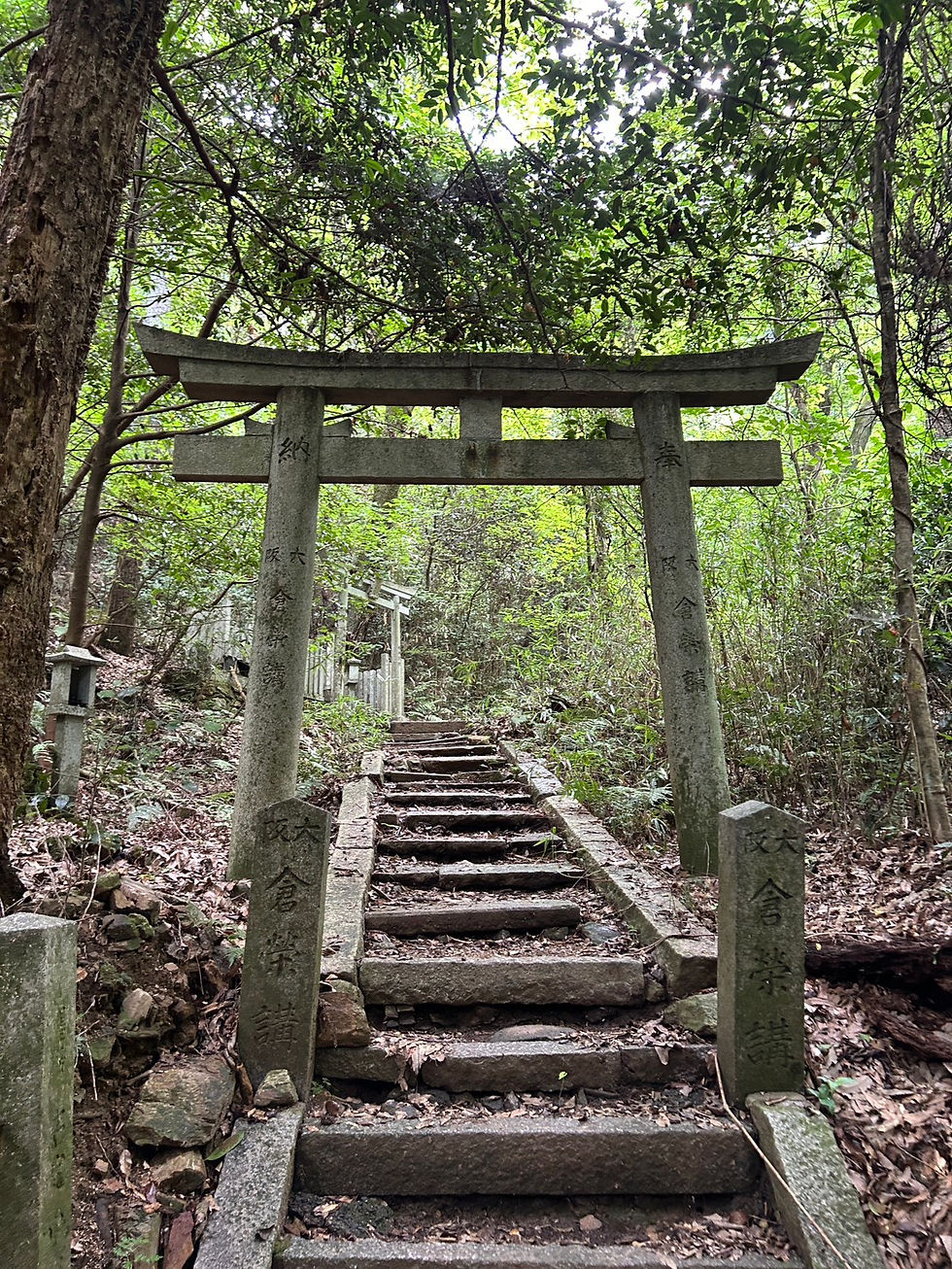Ancient Graves of The Fujiwara. The Uji-Ryou.
- Phillip Jackson

- Jul 3, 2021
- 3 min read
Who were the Fujiwara and why were so many of them buried in such high status?
Featured in HIDDEN PATHS - Walking Historical Kyoto Volume 1 and the Omnibus Edition is the walk 'The Fujiwara Uji Graves, Kohata'. 37 graves dotted around the area of Kohata, Kyoto, an area chosen maybe because as written in an ancient document "Kohataji-jugannmon," that Kohata is a sacred place where the Gods were believed to gather. The graves are numbered but it's not sure who of the Fujiwara is actually buried in each. And who actually were the Fujiwara?
The Fujiwara clan originated when the founder, Nakatomi no Kamatari (614–669), was rewarded by Emperor Tenji with the honorific "Fujiwara" for aiding in the defeat of the powerful Soga family and putting Tenji on the throne. It has been said that in the 7th century when Nakatomi no Kamatari gave consultations to Tenji (then prince) that at the place of their meetings was a full blooming Wistaria (Fuji) and it was Kamatari’s request to take the honorific as his family name. And so, into existence came probably the most famous and influential family in Japanese history.

The Fujiwara dominated the Japanese political landscape of the Heian period (794–1185) through their monopoly on regent to the emperor positions. The family's primary strategy for central influence was through the marrying of Fujiwara daughters to emperors. Through this, the Fujiwara would gain influence over the next emperor who would, according to family tradition of that time, be raised in the household of his mother's side and owe loyalty to his grandfather. As abdicated emperors took over power by exercising Insei at the end of the 11th century (the cloistered rule system, Insei, was a specific form of government in Japan during the late Heian period. In this system, an emperor abdicated, but retained power and influence.), then followed by the rise of the samurai warrior class, the Fujiwara gradually lost its control over mainstream politics.
Beyond the 12th century, they continued to monopolize the titles of regent and chief advisor for much of the time until the system was abolished in the Meiji era. Though their influence declined, the clan remained close advisors to the succeeding Emperors in to the 20th century.
The Heian Fujiwara period is also remembered for its literature, mostly written by court ladies, one of which was the famous The Tale of Genji by Murasaki Shikibu. Murasaki herself was born in the 970’s in to one of the branches of the Fujiwara family.
Some of the burials are in wooded areas as pictured above right (a location where two graves are next to each other). Pictured below is the Minamiyama Shrine, a small shrine between two graves. There is stonework hidden in the hillside beyond though whether this is part of buildings that once belonged to the shrine is not known.

Though it is not known exactly whose remains are buried at the grave sites it is thought that many are those of the imperial consorts and imperial mothers such as Fujiwara no Onshi (885-954), the Empress consort to Emperor Daigo. As it was those women that had caused the family line to flourish, they were accorded a high level of respect in their burial.

Many of the graves, as pictured above, are in areas where houses have been built around them.
A notable member of the Fujiwara family to be buried at Kohata was Michinaga no Fujiwara. Three of Michinaga’s daughters became empresses.
"This world, I think,
Is indeed my world.
Like the full moon I shine,
Uncovered by any cloud"
A Poem by Michinaga no Fujiwara
It is said that there are 37 graves in total that date back to the 8th century (the oldest) and are now administered by the Imperial Household Agency.
And if you're lucky, you might even see a bit of the local wildlife!

For short video on the Fujiwara Graves of Kohata, Uji follow the link to the HIDDEN PATHS YouTube channel https://www.youtube.com/watch?v=rqmOVAMIiaU




Comments